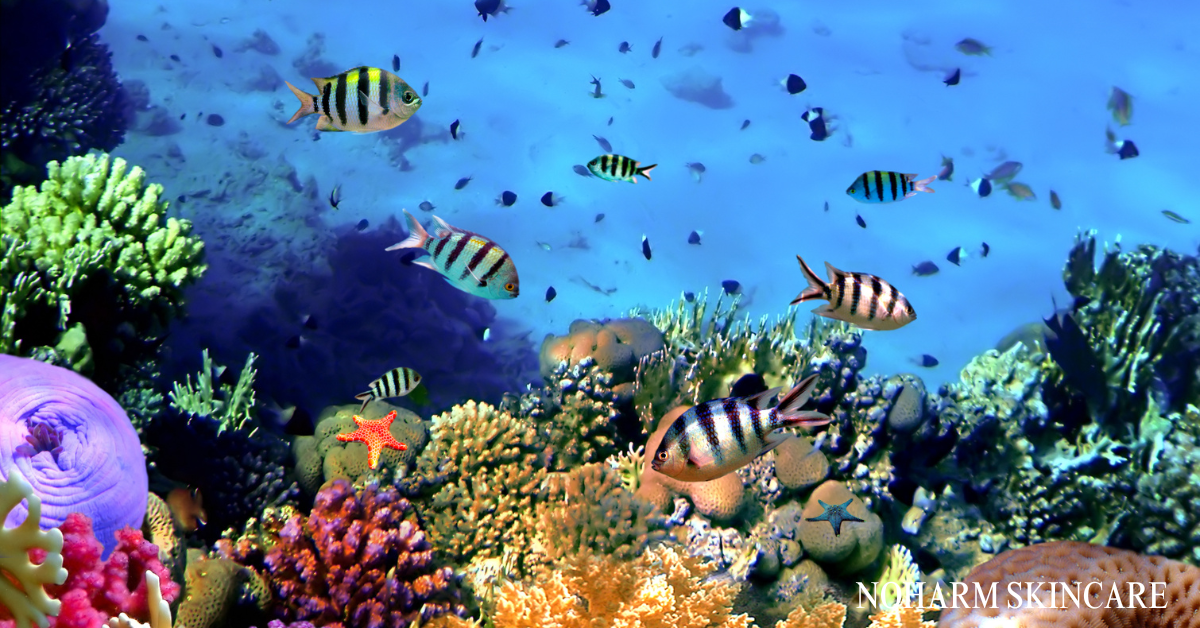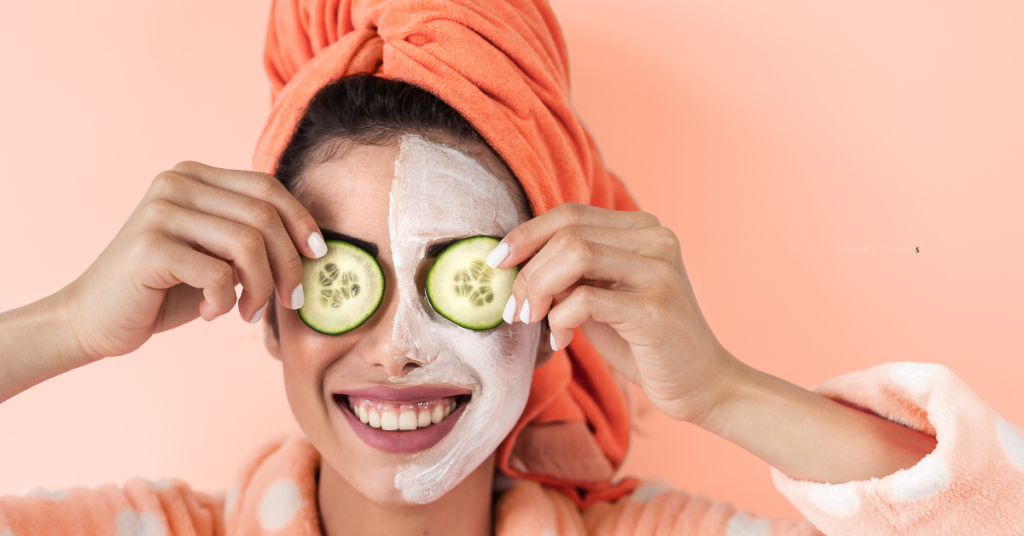Understanding Sunscreen Ingredients: What You Need to Know.
When choosing a sunscreen, we often focus on SPF levels and water resistance. But have you ever wondered about the ingredients in your sunscreen? Some common UV-blocking chemicals—such as oxybenzone, octinoxate, and avobenzone—are currently under scrutiny for their potential impact on marine ecosystems and human health.
NOHARM Cosmetics may receive Amazon Associate affiliate commission if you buy through our links. Please find more information here.
Sunscreen and Coral Reefs: What’s the Concern?
Several locations around the world have restricted or banned certain sunscreen ingredients due to concerns over coral reef damage. Research suggests that oxybenzone and similar chemicals may contribute to coral bleaching, harming delicate marine ecosystems. As a result, numerous regions have implemented bans on sunscreens containing these ingredients:
– Hawaii, USA– Banned oxybenzone and octinoxate in 2021.
– Key West, Florida, USA– Initially banned oxybenzone and octinoxate, but the law was later overturned at the state level.
– Palau — Prohibited sunscreens with oxybenzone, octinoxate, and several other chemicals since 2020.
– U.S. Virgin Islands – Banned the sale of sunscreens containing oxybenzone, octinoxate, and octocrylene in 2020.
– Aruba – Implemented a ban on oxybenzone-based sunscreens in 2020.
– Bonaire – Banned oxybenzone-containing sunscreens in 2021.
– Mexico (Certain Areas) – Eco-parks and marine reserves, such as Xcaret and Cozumel, restrict non-biodegradable sunscreens.
– Thailand – Prohibited sunscreens with oxybenzone, octinoxate, 4-methylbenzylidene camphor, and butylparaben in national parks, including Maya Bay.
– Marshall Islands – Implemented restrictions similar to Palau.
– Ecuador (Galápagos Islands) – Limits the use of non-biodegradable sunscreens to protect marine life.
With growing awareness, more regions and conservation areas are considering similar regulations to encourage the use of reef-safe sunscreens.
Understanding Oxybenzone and Skin Absorption
Beyond environmental concerns, oxybenzone has also been studied for its ability to penetrate the skin. Research indicates that oxybenzone can be absorbed into the bloodstream due to its molecular properties:
– Molecular Weight: Oxybenzone has a molecular weight of 228.24 g/mol, small enough to pass through the skin barrier (compounds under 500 Da are generally capable of skin penetration).
– As a fat-soluble compound, oxybenzone can accumulate in tissues.
– Systemic Absorption: Studies have detected oxybenzone in urine, blood, and even breast milk after topical application.
Many sunscreens, tinted moisturizers, and SPF lip balms contain oxybenzone (also labeled *benzophenone-3*). Some formulations, such as *Helioplex*, combine oxybenzone with avobenzone.
Choosing a Safer Alternative
If you’re looking for a sunscreen that’s both reef-safe and skin-friendly, mineral-based options can be a great alternative. Brands like People4Ocean SPF 50 Sunscreen (Australia), developed by marine biologists, use non-nano zinc oxide instead of oxybenzone or octinoxate. These formulations offer effective UV protection without synthetic fragrances, parabens, or potentially harmful chemicals. Waxhead (non-nano zinc oxide) and Thrive Reef Safe Sunscreen – Hawaii 104 Reef Act Compliant are two other notable brands.
Since ingredient formulations can change, always check the label for the most up-to-date information or visit the brand’s official website. When selecting a sunscreen, always check the ingredient list to ensure it meets your specific requirements and preferences.
REFERENCES:
Danovaro, R., Bongiorni, L., Corinaldesi, C., Dell’Anno, A., Pusceddu, A., & Rinaldi, C. (2008). Sunscreens cause coral bleaching by promoting viral infections. *Environmental Health Perspectives, 116*(4), 441-447. https://doi.org/10.1289/ehp.10966
Tsui, M. M. P., Leung, H. W., Wai, T. C., Yamashita, N., Taniyasu, S., Liu, W., & Lam, P. K. S. (2017). Occurrence, distribution, and ecotoxicology of organic UV filters in coral communities. Environmental Science & Technology, https://doi.org/10.1021/acs.est.6b05211
Matta, M. K., Florian, J., Zusterzeel, R., Pilli, N. R., Patel, V., Volpe, D. A., … & Bashaw, E. D. (2020). Effect of sunscreen application under maximal use conditions on plasma concentration of sunscreen active ingredients: A randomized clinical trial. JAMA, 323 (3), 256-267. https://doi.org/10.1001/jama.2019.20747




